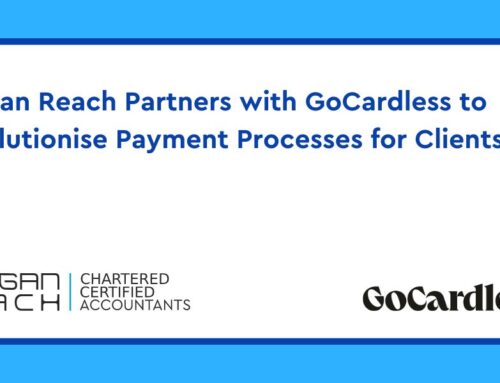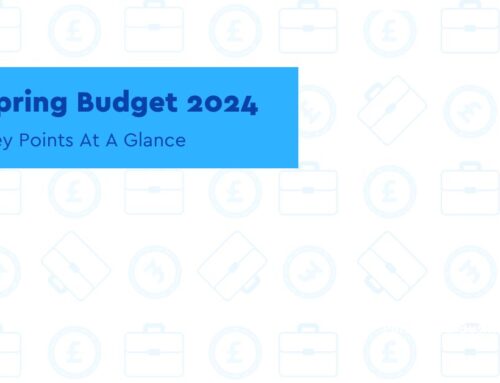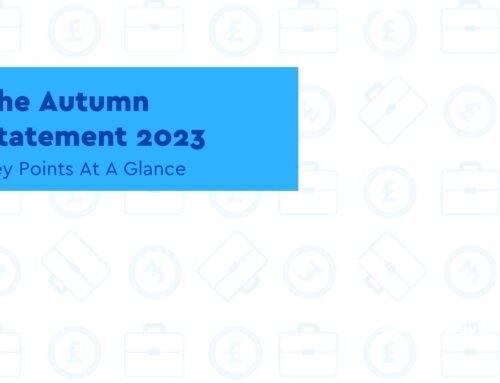News – R&D Reliefs
HMRC update guidance on R&D reliefs
Key Points
- R&D expenditure credit can be claimed by SMEs subcontracted to do R&D work by a large company
- They must have received a grant for their project
- Or, expenditure which is more than the SME scheme aid cap
HMRC has updated its research and development guidance concerning when RDEC can be claimed, how to claim and what tax liabilities can be discharged with the credit.
R&D expenditure credit (RDEC) replaced the large company scheme in April 2016.
R&D expenditure credit can also be claimed by small and medium-sized enterprises (SMEs) who have been subcontracted to do R&D work by a large company and have either:
- Received a grant or subsidy for their R&D project
- Expenditure which is more than the SME scheme aid cap
You might do this as a SME if you cannot claim R&D tax relief for SMEs.
The credit is calculated at 13% of your company’s qualifying R&D expenditure (this rate applies to expenditure incurred on or after 1 April 2020) and is taxable as trading income.
Regardless of whether your company makes a profit or loss, some or all of the credit may be used to discharge your company’s (or other group companies’) corporation tax liabilities.
In some circumstances, it can be used to discharge other tax liabilities your company is liable for.
A claim for R&D expenditure credit can lead to a cash payment of credit to your company in some circumstances.
HMRC’s ‘Research and Development tax relief for small and medium-sized enterprises’ guidance has also been updated to reflect how to claim R&D relief. This includes the following updates:
How to claim R&D relief
You can make a claim for R&D relief up to 2 years after the end of the accounting period it relates to.
You can claim the relief by treating it as a deduction from the company’s profits for the accounting period. Your claim must be made in the company tax return or an amendment to the return.
You must send:
- a full Company Tax Return form (CT600)
- completed tax computation
- form CT600L, if you are claiming a payable tax credit or Research and Development Expenditure Credit
How to support your claim
You may use the online service to send HMRC details to support your R&D tax relief claim.
You’ll need to have already submitted your full Company Tax Return form (CT600), completed tax computation and, if you are claiming payable tax credit, form CT600L to make your claim before using this service to send details to support the claim.
To use the online service, you need a Government Gateway user ID and password. If you do not have a user ID, you can create one when you first use the service.
If your claim covers a period of 12 months or more, submit a separate claim for each accounting period.
This article was sourced from gov.uk guidance 1 + 2.
News – Employment Allowance
Employment allowance: how to claim back National Insurance
Key Points
- The employment allowance is an annual amount businesses can claim towards their employers’ NI
- It reduces your liability by up to £5,000 a year
If you’re an employer, the employment allowance reduces your secondary Class 1 National Insurance contributions. But you need to claim it, as it isn’t automatically applied.
What is employment allowance?
The employment allowance is an annual amount businesses can claim towards their employers’ Class 1 National Insurance.
It reduces your liability by up to £5,000 a year. You’ll see a reduction each time you run payroll, until you’ve used up the £5,000 or the tax year ends.
You don’t need to use the entire amount each year, which means you can use the employment allowance even if your employer’s National Insurance liability is less than £5,000.
Am I eligible for employment allowance?
If your employer’s Class 1 National Insurance liabilities were less than £100,000 in the previous tax year, you should be able to claim the employment allowance.
Eligibility for employment allowance extends to charities too, including community amateur sports clubs, as well as care and support workers.
Which businesses aren’t eligible for employment allowance?
You can’t claim employment allowance if you’re a company with one employee paid above the Class 1 National Insurance secondary threshold and that employee is also a director of the company.
You can’t include these employees in a claim:
- those with earnings inside IR35 rules (don’t include ‘deemed payments’ to off-payroll workers in your calculations)[Text Wrapping Break]
- those who work for you in a personal capacity, or for domestic or household work (unless they’re a care or support worker)[Text Wrapping Break]
Public bodies or businesses that do more than half their work in the public sector can’t claim the employment allowance, unless they’re a charity.
Do you have more than one employer PAYE reference?
HMRC gives every business that registers as an employer a PAYE reference number.
If you’ve got (or have had) more than one, then your total employer’s Class 1 National Insurance liability for the combined payrolls should be less than £100,000 in the last tax year.
How to claim employment allowance
Claiming employment allowance using your own payroll software
If you use payroll software instead of HMRC’s tools, these are the steps to take:
- choose ‘Yes’ in the ‘Employment Allowance indicator’ field when you next send an employment payment summary (EPS) to HMRC[Text Wrapping Break]
- if it doesn’t have this field, use HMRC’s basic tools (described below)[Text Wrapping Break]
- you need to choose your business sector for ‘de minimis state aid’ rules, even if you don’t make a profit – most businesses will be under the ‘industrial/other’ category[Text Wrapping Break]
Claiming employment allowance using HMRC’s Basic PAYE Tools
Basic PAYE Tools is HMRC’s free payroll software for businesses with less than 10 employees:
- choose the right name in the ‘Employer’ menu on the home page[Text Wrapping Break]
- go to ‘Change employer details’[Text Wrapping Break]
- choose ‘Yes’ in the ‘Employment Allowance indicator’ field[Text Wrapping Break]
- choose ‘Yes’ under ‘Do state aid rules apply?’ if you sell goods or services and the sectors that apply to you[Text Wrapping Break]
- send your EPS[Text Wrapping Break]
What are state aid rules?
If you sell goods or services, employment allowance is ‘de minimis state aid’ and there’s a limit to how much of this you can get. Businesses in the ‘industrial/other’ category can get €200,000 over three years.
De minimis state aid rules don’t apply to charities, amateur sports clubs, or care workers.
After you claim
You start using your employment allowance as soon as you make a claim. You won’t hear from HMRC unless it’s rejected.
What if I stop being eligible?
You need to choose ‘No’ in the ‘Employment Allowance indicator’ field.
But this is only if you’re no longer eligible – keep in mind that even if you use up your employment allowance, you’re still eligible.
And if you no longer employ anyone, the allowance stops at the end of the tax year, so don’t choose ‘No’.
HMRC removes your allowance if you stop it before the end of the tax year (5 April) and you’ll have to pay the National Insurance that’s due.
When to claim employment allowance
You need to claim employment allowance every tax year – it’s best to do it as early as possible.
You can also claim for previous tax years, if you think you were eligible.
What if I claim late?
If you don’t end up using the allowance against your employer’s National Insurance, you can use the unclaimed amount to pay any outstanding tax or other National Insurance you owe.
If there’s nothing owed on your PAYE bill, you can use it for VAT or corporation tax.
You can also get a refund if you don’t owe any other tax.
Claiming employment allowance for past tax years
You can claim employment allowance for the previous four tax years, going back to 2018-19.
The allowance was £4,000 between 6 April 2020 and 5 April 2022 and £3,000 between April 2016 and April 2020.
You can read more about claiming employment allowance in HMRC’s guidance.
This article was sourced from Simply Business: https://www.simplybusiness.co.uk/knowledge/articles/2022/08/what-is-employment-allowance/
News – Business Support
Call for radical approach to energy support for business
Key Points
- The BCC has proposed a five-point plan to offer businesses immediate support
- This includes temporary cuts in VAT to 5% for businesses to reduce energy costs and reverse the rise in NICs, alongside introducing government emergency energy grants for SMEs.
The government needs to provide urgent support on energy bills for individuals and businesses, say Resolution Foundation and British Chambers of Commerce (BCC).
The next Prime Minister will need to introduce radical new policies to prevent the energy bills crisis from becoming a serious threat to both families and businesses.
The British Chambers of Commerce (BCC) has proposed a five-point plan to offer businesses immediate support, stating that the cost of living and the cost of doing business crisis are two sides of the same coin.
The five-point plan includes strengthening regulation of the energy market for businesses, temporary cuts in VAT to 5% for businesses to reduce energy costs and reverse the rise in National Insurance contributions (NICs), alongside introducing government emergency energy grants for SMEs.
It is also asking the government to review and reform the shortage occupation list (SOL) to help bring down wage pressures and fill staffing vacancies by allowing more overseas workers to apply for UK jobs.
BCC research has shown a reduction in the percentage of firms expecting to grow in the next 12 months, from 63% (Q1) to 53% (Q2). In January, 23% of businesses surveyed were looking to scale down or even consider closure in response to rising costs.
Shevaun Haviland, director general of the BCC, said: ‘Since the start of 2021 we have been repeatedly hearing the same message: the cost of doing business is increasing.
‘At over 10%, CPI inflation is at a 40-year high; interest rates are seeing the largest increase in 27 years; and eye watering energy bills have created a perfect storm of increasing costs. The impact of these challenges on consumers, businesses and wider society cannot be overstated.
‘The BCC’s five-point plan is not solely about ensuring support for businesses. It is also about protecting jobs, securing livelihoods, and creating a vibrant and prosperous society for everyone.
‘Good business is good for our communities, and we must support firms and the individuals that run them to ride out this economic storm.’
The Resolution Foundation called for energy bill freezes and the introduction of solidarity taxes to help the poorest households survive this coming winter, with the price cap forecast to hit £3,600 in October and top £4,500 in January.
The report by the Resolution Foundation examines the impact of rising energy bills on low, middle and high income households, stating that urgent policy action is required.
It notes that typical energy bills will cost around £2,000 more this year than in 2021. This income shock will be most acute this winter, when 80% of all annual domestic gas demand occurs.
While £30bn has already been committed to supporting families with energy bills, the Resolution Foundation warns that a far higher price cap coming in ahead of peak energy use means we are on course for a ‘winter catastrophe’, with the cost of energy £881 higher than forecast back in May.
Jonny Marshall, senior economist at the Resolution Foundation, said: ‘A catastrophe is coming this winter as soaring energy bills risk causing serious physical and financial damage to families across Britain. We are on course for thousands to see their energy cut off entirely, while millions will be unable to pay bills and build up unmanageable arrears.
‘The new Prime Minister will need to think the unthinkable in terms of the policies needed to get sufficient support to where it’s needed most.
‘Significant additional support should be targeted at those most exposed to rising bills and least able to cope with them and be watertight so that no-one falls through the cracks. But none of the proposals from the leadership candidates or the opposition parties currently do this.’
At a minimum future payment should reflect the household size, but a better approach would be for additional support to come via a new social tariff on energy bills for low-and-middle-income households, including those not receiving benefits.
The report recommends a 30% bill reduction for those on benefits or with no one in the household earning over £25,000, which would cost £15.4bn, but benefit 94% of the poorest half of households.
Equally, a solidarity tax of a 1% increase in all income tax rates would see the large costs of a universal price reduction (£23.5bn) offset by a tax increase of £9.5bn, with 60% paid by the top fifth of higher income households.
This article was sourced from Accountancy Daily: https://www.accountancydaily.co/call-radical-approach-energy-support-business
News – Economy
Bank of England may be forced to raise interest rates to 4% in 2023
Key Points
- The movements in financial markets come as mortgage lenders ramp up the rates they offer to borrowers
- The Bank raised rates by 0.5 percentage points this month, the biggest single rise in almost 30 years.
The Bank of England could be forced to raise interest rates to 4% from as early as next year to combat soaring inflation, despite the growing risk of recession amid the cost of living crisis.
City traders are betting the central bank will more than double the cost of borrowing from 1.75% in response to inflation at the highest levels for more than 40 years.
In a development that will heap renewed pressure on mortgage holders, the Bank’s key base rate is expected to reach 4% by May 2023, according to the path implied by financial markets.
The base rate is expected to finish the year above 3% and could peak at close to 4.1% in June 2023, based on interest-rate derivatives linked to the meeting dates of Threadneedle Street’s monetary policy committee. The Bank is then expected to cut rates close to 3.8% by the end of next year amid expectations of fading inflationary pressures and a lengthy recession.
The movements in financial markets come as mortgage lenders ramp up the rates they offer to borrowers. Figures from the data provider Moneyfacts showed the average new two-year fixed-rate mortgage rose above 4% for the first time since 2013 at the start of this month. Lenders set their rates based on the central bank base rate and financial market conditions, and in competition for business with other providers.
The expectations for a dramatic rise in borrowing costs comes with inflation above 10% for the first time since the 1980s. Some City economists are forecasting a peak above 18% next January, fuelled by a sharp increase in household energy bills expected in October and early next year.
The Bank raised rates by 0.5 percentage points this month, the biggest single rise in almost 30 years. Expectations for rates hitting 4% would probably require similar sharp increases in borrowing costs.
Threadneedle Street has a target, set by the government, to steer inflation towards 2%. It faced sharp criticism in the Conservative leadership race after Liz Truss said she could tweak its mandate to get inflation back under control.
On the path implied by financial markets, the Bank would raise the cost of borrowing by more than the US Federal Reserve, with traders betting interest rates would peak at close to 3.8% in March next year.
However, expectations for higher interest rates could be tempered by a sharper slowdown in the UK economy, amid early warning signs that Britain’s economy is heading for a lengthy recession.
Two separate snapshots of industrial activity published on Tuesday showed a decline in manufacturing activity, while there are concerns that soaring living costs will force households to cut back their spending to deal with higher energy bills.
This article was sourced from Accountancy Daily: https://www.accountancydaily.co/call-radical-approach-energy-support-business
Latest Snippets
New HMRC Advisory Fuel Rates published
HMRC has published new Advisory Fuel Rates (AFRs) effective from Thursday (September 1) for company car drivers claiming back fuel costs from their employer.
The fuel reimbursement rates have been increased by up to 3p per mile (ppm), having been raised by a similar amount when they were last reviewed in June.
The rates for petrol company cars have all increased, with the AFR for petrol vehicles up to 1,400cc now 15ppm, up from 14ppm. Petrol vehicles with an engine size from 1,401-2,000cc also increase by 1ppm, from 17-18ppm, and those over 2,000cc increased by 2ppm, from 25-27ppm.
The diesel rate for company cars with an engine size of more than 2,000cc has been increased by 3ppm, from 19-22ppm, while the AFR rates for diesel cars up to 1,600cc increase from 13ppm to 14ppm.
For LPG-fuelled vehicles, rates go up by 1ppm for vehicles with an engine size over 2000cc.
Paying annual tax on enveloped dwellings – payment updates
You may need to pay annual tax on enveloped dwellings if your company, partnership or collective investment scheme owns, either completely or partly, residential property worth more than £500,000.
You may need to pay Capital Gains Tax related to annual tax on enveloped dwellings if you sold a property before April 6, 2019.
Information has been added this week by HMRC on how to approve a payment through your online bank account.
You can pay by approving a payment through your online bank account by selecting the ‘pay by bank account’ option. You will be directed to sign in to your online or mobile banking account to approve your payment.
You need your online banking details, such as your sort code and account number, to pay this way.
The payment is usually instant but sometimes it takes up to 2 hours to show in your account.
Get In Touch
At Morgan Reach, we understand every business needs a little help now and again-especially when it comes to the financial side of things. Therefore, to help our clients and visitors we endeavour to cover as much of the business news as possible. If you are self-employed or run a business and need assistance and advice on how these news could make a difference to you or your business, feel free to get in touch with the experts at Morgan Reach. Our business growth experts at Morgan Reach will guide you through what support is available for you or your business as well as the latest news that may affect you.







